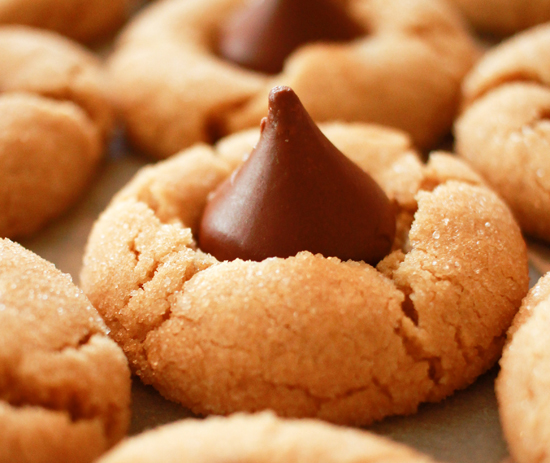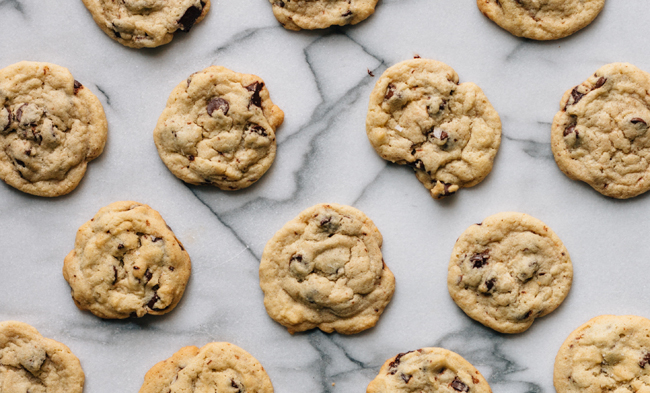Whether you love a classic chocolate chip cookie, prefer intricately frosted sugar cookies, or bake from a well-worn family heirloom recipe, the holiday baking season puts everyone’s sweet tooth into overdrive. There are a lot of elements that go into creating the perfect Christmas cookie and (happily!) it can take a lot of taste testing. Follow these cookie baking tips this holiday season for the very best results.
![]()
Tip #1: Should I Use Melted Butter or Softened Butter When Baking Holiday Cookies?
The question of whether you should use melted butter vs. softened butter in cookies is common. The temperature of the butter you use will affect how it mixes with the other ingredients in your dough.
Using Softened Butter: With softened butter the fats in the butter mix more easily with sugar when creamed and are more evenly distributed, leaving you with a tender dough.
Using Melted Butter: Melted butter provides moisture and flavor but does nothing to help with the structure of your baked goods. It can, however, lead to a chewy texture. It’s often used in recipes for pancakes, brownies, cakes, or muffins.
Using Cold Butter: Cold butter is best when you don’t want your butter to mix with the other ingredients but, instead, want your cookie or pastries to have distinct layers (scones, biscuits, pie dough)
A Final Tip: It takes about 30-60 minutes for your butter to soften to room temperature.

Tip #2: Does Brown Sugar vs White Sugar Change the Cookie Recipe?
Have you ever faced this dilemma . . . you go to the pantry to grab white sugar only to find that you’re all out? But, you have brown sugar. Will you ruin the recipe if you use it instead?
The truth is, you can substitute brown sugar in place of white sugar in your holiday cookie recipe and they’ll have the same sweetness. However, you may experience noticeable differences in the structure of your cookies.
White sugar is 99% sucrose and refined to eliminate almost all impurities but brown sugar which includes molasses is only about 95% sucrose. The addition of molasses makes baked goods baked with brown sugar moister, so you may end up with a thicker and chewier cookie. You may need to make other tweaks to your recipe (less wet ingredients and more dry ingredients) if you don’t want to compromise on the perfect results.
So, what about the opposite scenario, where a recipe calls for brown sugar and you only have white? Simply add 1 cup of granulated sugar to 1 1/2 tbsp. of molasses for light brown sugar or 1/4 cup of molasses for dark brown sugar.
A Final Tip: Some people are under the misconception that brown sugar is “healthier” than white sugar, but this is not true.

Explore Our Other Blogs
Entertaining & Holidays– Learn how to host perfect dinners and learn about Amish holiday traditions.
In The Kitchen – Explore how to make the most out of your Market’s produce and food with recipes, tips & tricks, helpful guides.
Shopping At The Markets– Find helpful advice for shopping at a farmers market on anything from FAQs on shopping in bulk or secrets to choosing the best produce.
Tip #3: Are Cookie Recipes Better With Wheat Flour or White Flour?
You may have heard that foods made from whole wheat are healthier options over foods made with refined and processed white wheat. But is whole wheat flour a smart substitution to make during your holiday baking? Unfortunately, in your Christmas cookie recipe, the answer is no.
Because whole wheat flour contains all three components of the wheat grain it can dramatically alter the consistency of your baked goods, generally making them heavier and denser. It may also produce a slightly bitter taste.
If you’re still interested in using whole wheat flour in cookies, expert bakers recommend substituting no more than 25% of the amount of flour with whole wheat flour. For example, if your recipe calls for 1 cup of flour, use 3/4 cup all-purpose flour and 1/4 cup whole wheat flour.
A Final Tip: If you’re looking to introduce whole wheat flour into your baking, start with testing out bread, muffins, and pizza dough as your best bets!

Tip #4: Do I Need to Chill My Cookie Dough?
Let’s face it, in the hustle and bustle of the holiday season, you don’t always have the time to let your cookie dough chill, even if the recipe calls for it.
The idea behind chilled dough is that the cold butter will melt slower, the sugar will absorb more moisture and your cookies will be crisp and chewy. According to this side-by-side comparison, however, the chilled dough did not bake into a better holiday cookie.
Tip #5: What Baking Substitutions Can I Easily Make?
Sometimes baking substitutions are necessary, whether you’re trying to make a recipe healthier or you ran out of a key ingredient. Remember these switch-a-roos during this holiday baking season.
- 1 egg = ¼ cup applesauce
- 1 cup half-and-half = ½ cup whole milk + ½ cup heavy cream
- 1 cup sour cream = 1 cup plain yogurt
- 1 vanilla bean = 2½ teaspoons vanilla extract
- 1 cup vegetable oil = 1 cup applesauce
- 1 ounce unsweetened chocolate = 3 tablespoons natural unsweetened cocoa powder + 1 tablespoon unsalted butter
- 1 cup buttermilk = 1 cup plain yogurt
- ½ teaspoon baking soda = 2 teaspoon baking powder



